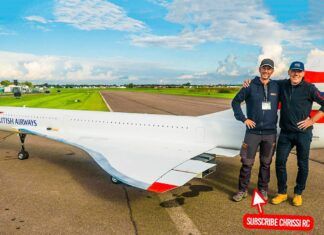Only the U.S. government could, in response to a labor situation in which the job is so boring and low-key that workers can’t stay awake to do it, double the workforce. That’s essentially where we are now with the sleeping controller fiasco, as the FAA announced adding a second controller to what had been solo midshifts at 27 facilities. In its press release, the FAA didn’t say what this little pot sweetener will cost, but I think all in, the extra people have to cost $100,000 each, so call it somewhere between $2 and $3 million in an FAA budget totaling $18 billionish. Barely coffee money, right?Maybe. But what does it get us in terms of enhanced safety? I think most reasonably informed people would say close to nothing. (Unless you place high value on stories like these staying out of the news.) At the very most, this is incremental safety-investing a bunch of money to nudge the safety needle the width of a human hair, if that. Once the heat is off this ridiculous situation, it will resurface in a year or so when the mainstream media discovers that despite two controllers on the midshift, one still fell asleep because he was on position while the other guy took a nap. Then what? Three controllers for a midshift in a tower working one airplane an hour, if that? A barking dog? A headset equipped with random electroshock probes?Acknowledging the obvious, this is a purely political response. But what to do? I was hoping for a more creative solution. For instance, some of those facilities should just close at night and turn the airspace over to the appropriate center or TRACON. Sure, it can’t provide runway separation, but with one airplane an hour, what’s to separate? Clearances and releases have been done for years through remote communications outlets with good results. Pilots can actually taxi and find runways at night without federal assistance. If monitoring is deemed so important, install cameras so the remote facility can keep an eye on the airport. In the last center I visited on a midshift, the workforce wasn’t exactly overwhelmed with stuff to do, but there were enough people to keep everyone awake.I thought Randy Babbitt’s initial response to this was a good one. The center or TRACON handling the flight would rattle the tower on a landline before the handoff. If there was no response, the crew would be so informed and could decide whether to divert or just land. I doubt if many would divert, frankly. In fact, this is what happened at Washington Reagan on March 23, during the first sleeping controller incident. An FAA source sent us a summary briefing of the DCA incident. Essentially, when the Potomac Consolidated TRACON controller couldn’t raise the tower, he decided to treat DCA as an uncontrolled airport and told the crew of an inbound American Airlines flight as much. The crew replied that it was fine with the uncontrolled airport idea, it landed and that was it. Simple, direct problem solving. Good initiative. No loss of separation. Admittedly, it does not address the professional dereliction of a six-figure salary government employee sleeping on the job. Although if he or she weren’t there in the first place, neither would the issue be.The more recent Reno-Tahoe incident played out about the same, although perhaps with a more reluctant pilot. When the pilot of an inbound medical flight with “a very sick patient” (his words) aboard couldn’t raise the tower, he orbited for five or six minutes trying to tease a landing clearance out of the tower, whose operator was asleep. I don’t find that an unreasonable decision, but it does show pilots view these things differently. Sick patient or not, I wouldn’t have bothered with the orbit-just go straight to GO and treat the airport as uncontrolled. But then I’ve flown a lot of IFR into non-towered airports and I’m comfortable with it.One thing controllers do in this situation that’s not helpful is to use the phrase “landing will be at your own risk.” They do that because the phrase is right there in the 7110.65 requiring them to do so. When a pilot hears that, does he or she think “risk as in bending metal or risk as in enforcement action? Or both?” It’s neither, of course, because every landing is at your own risk. All the controller can do is assure runway separation and given the number of incursions, even that’s not bulletproof.Adding 27 more midshift controllers won’t change that.
AVweb Insider
The air is cleared on fuel debate but is that a good thing?
Featured Video
Featured Video: RC Concorde
RC models keep getting bigger and more complex and this certainly ticks those boxes.

































